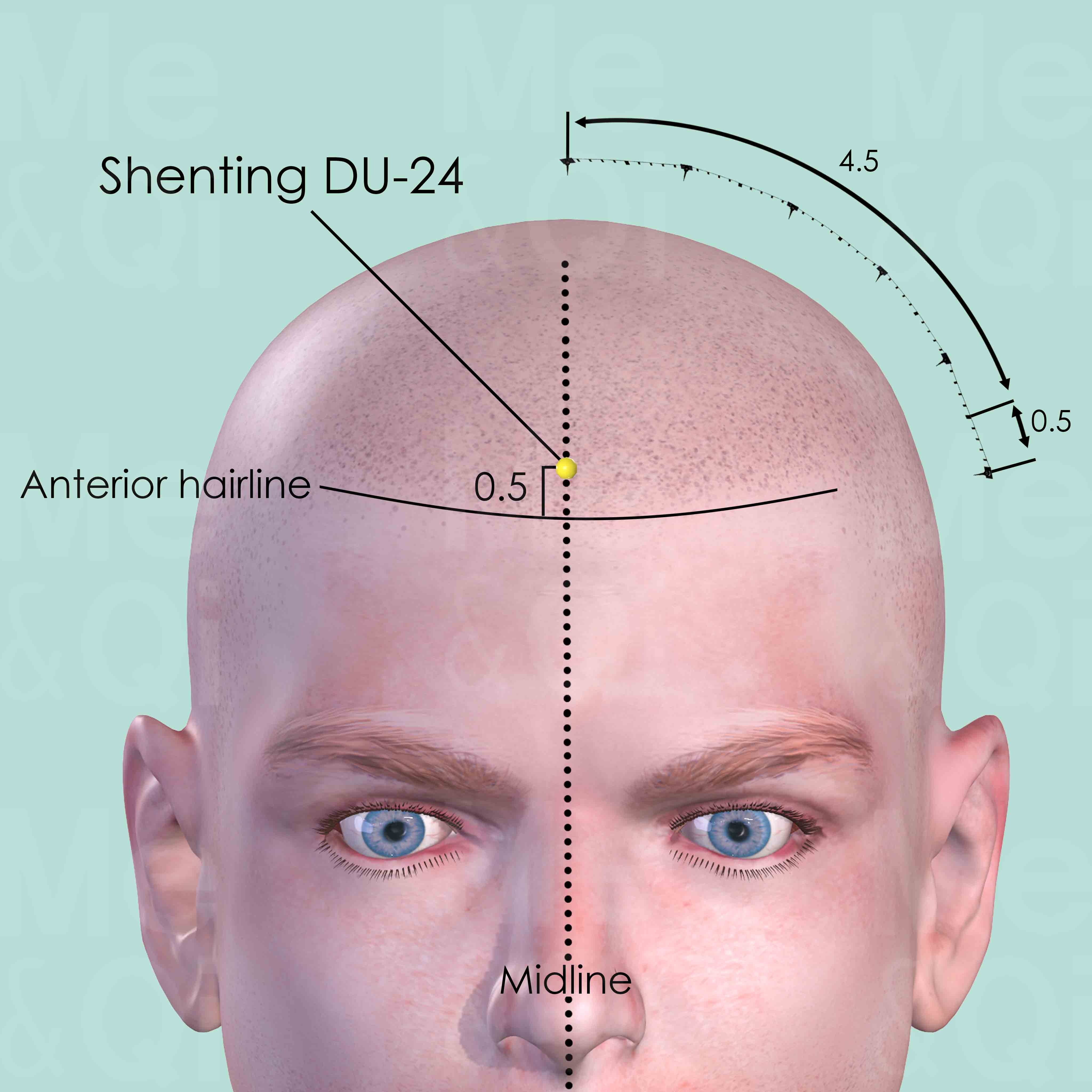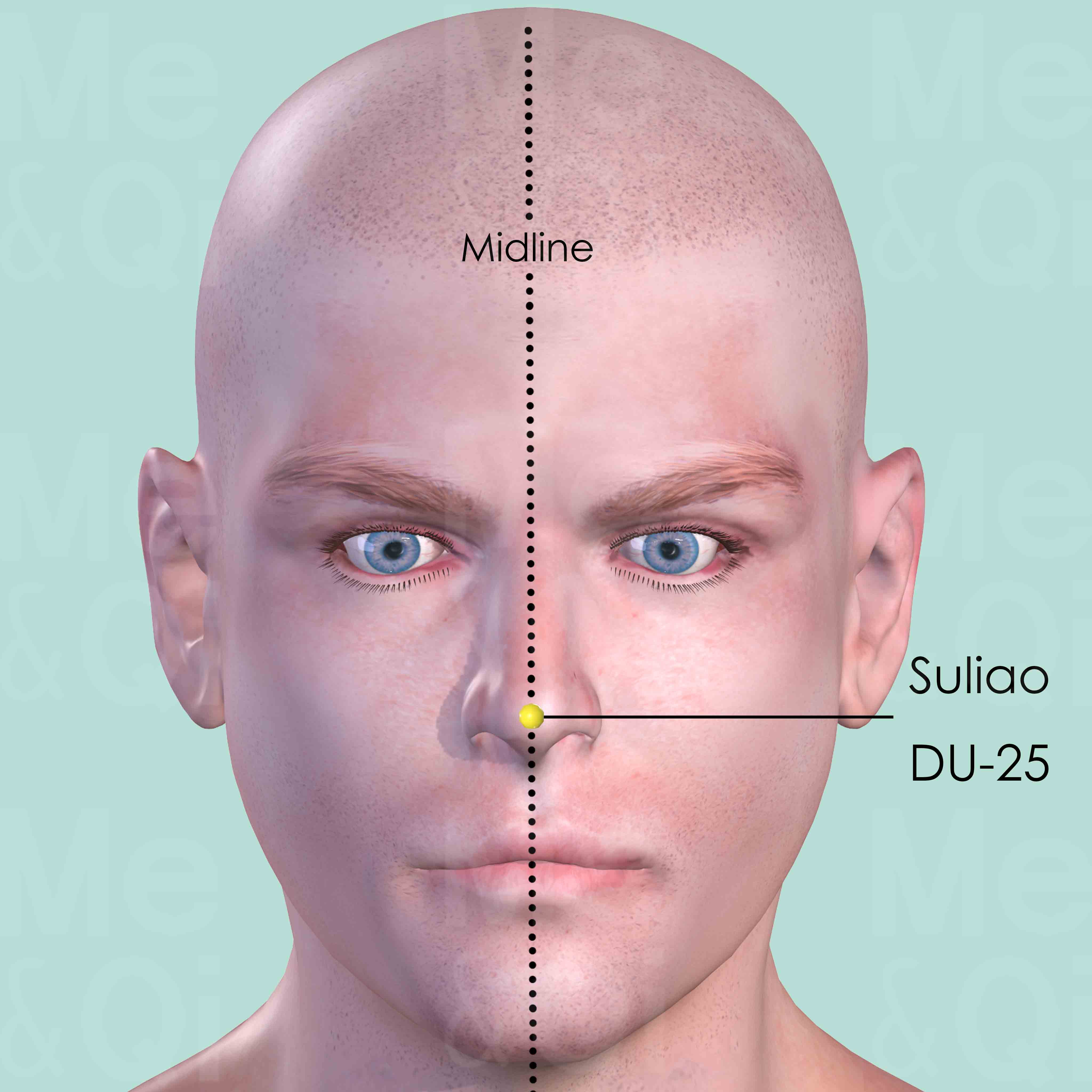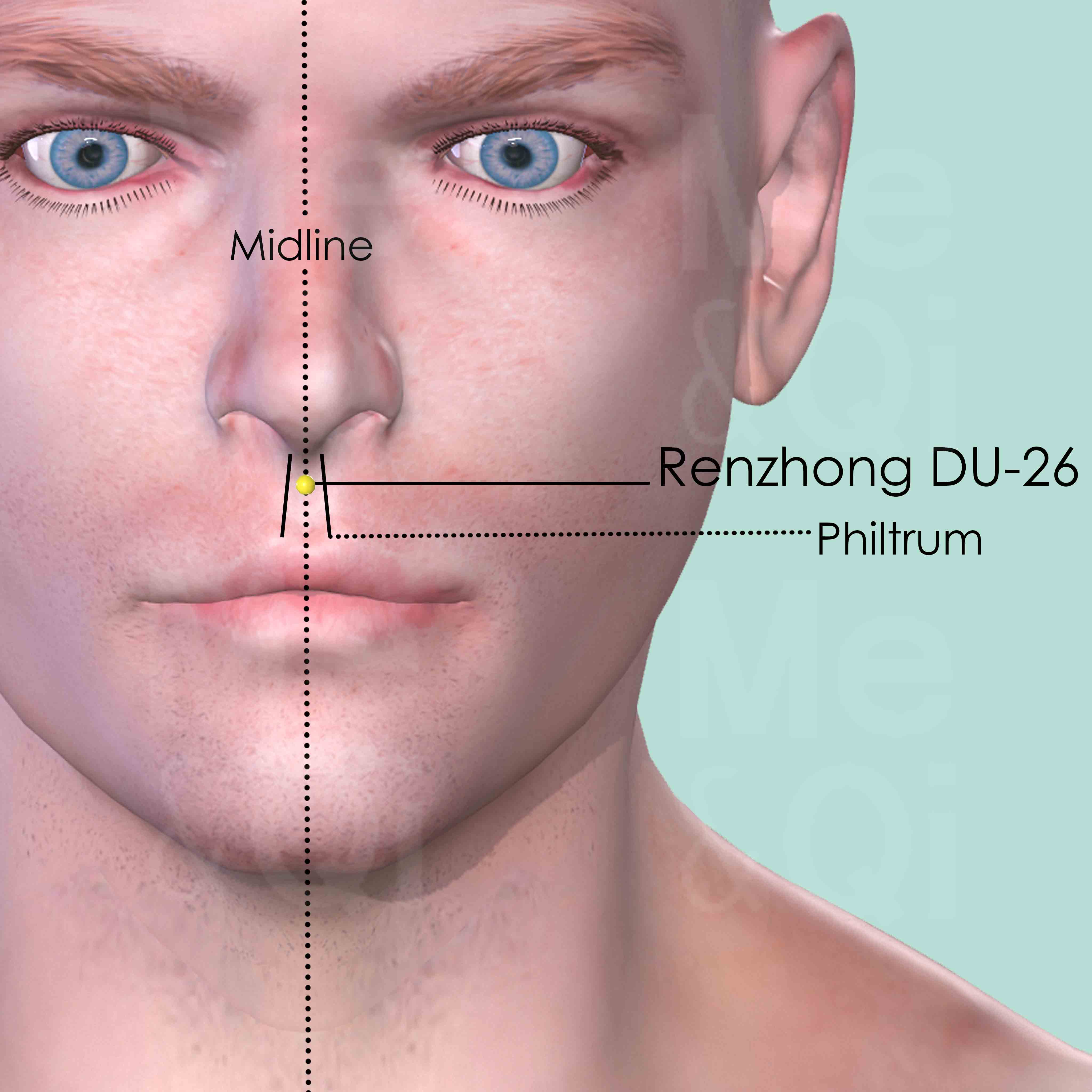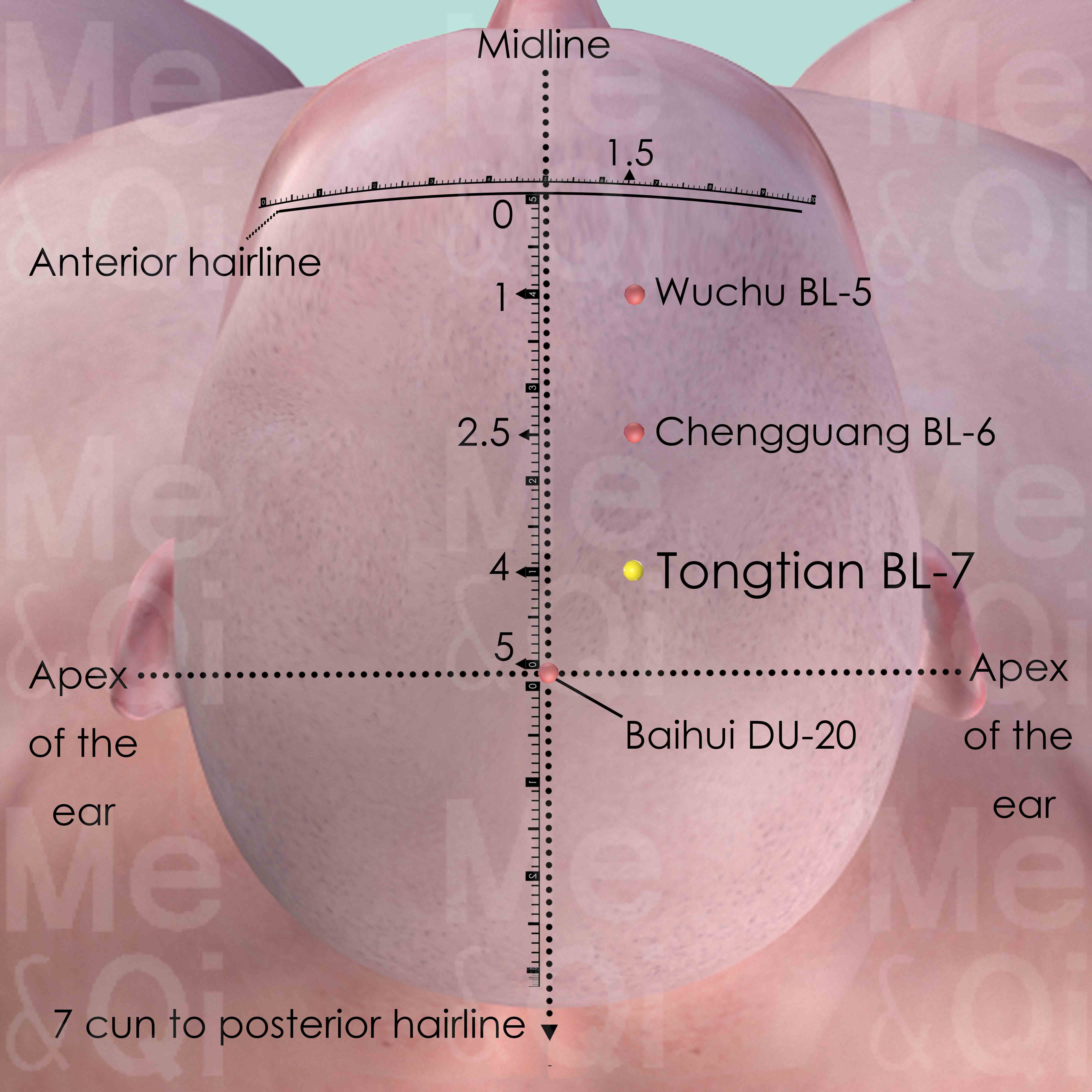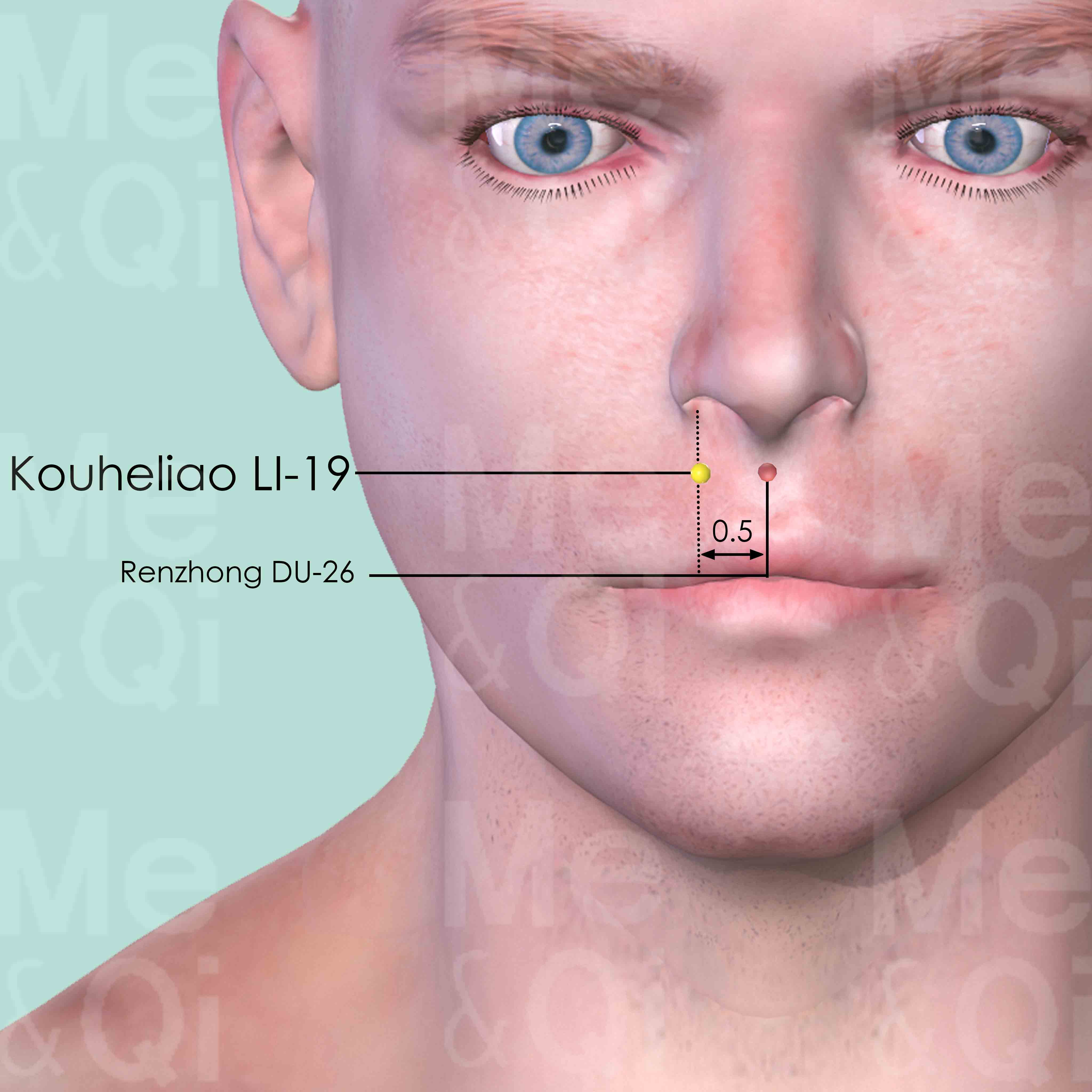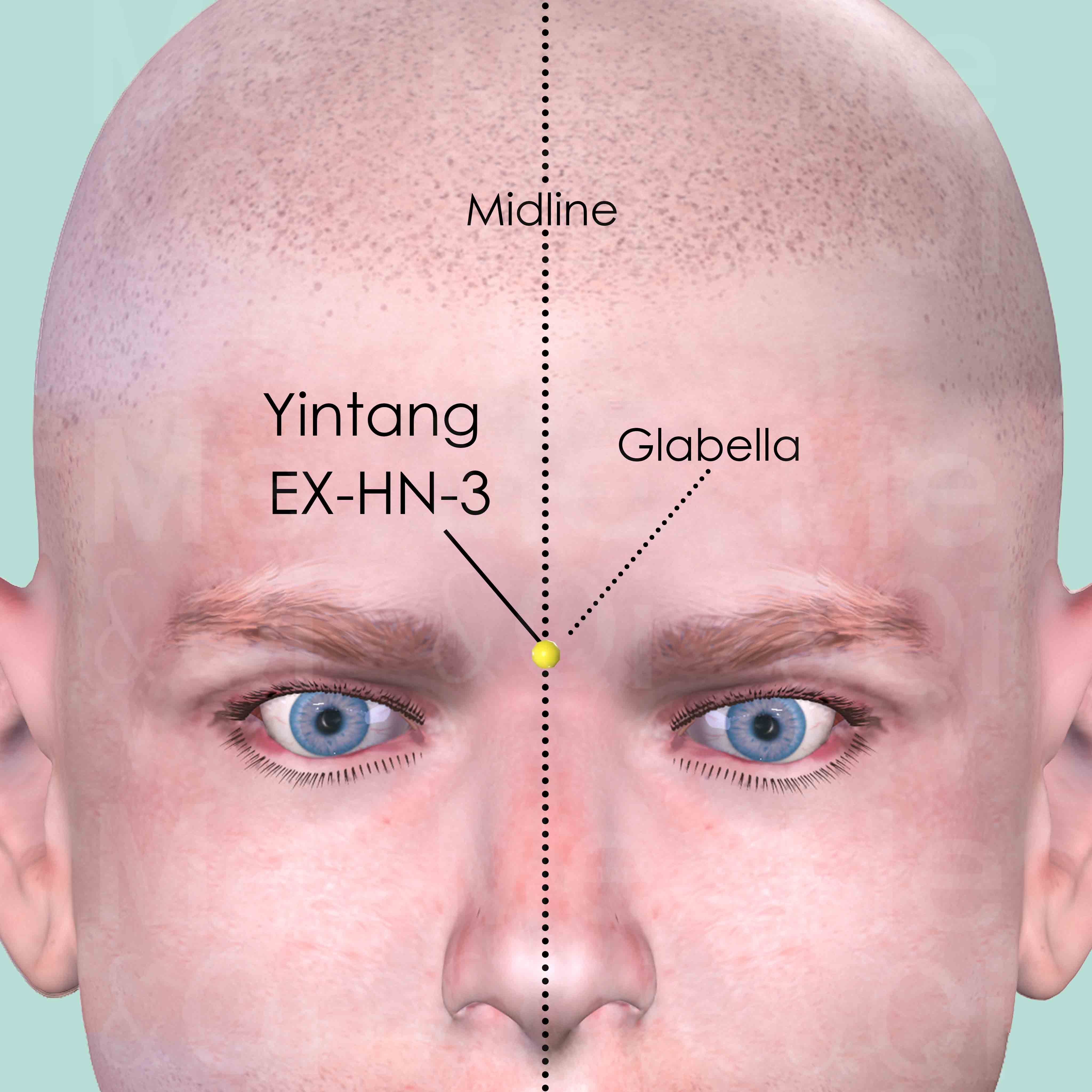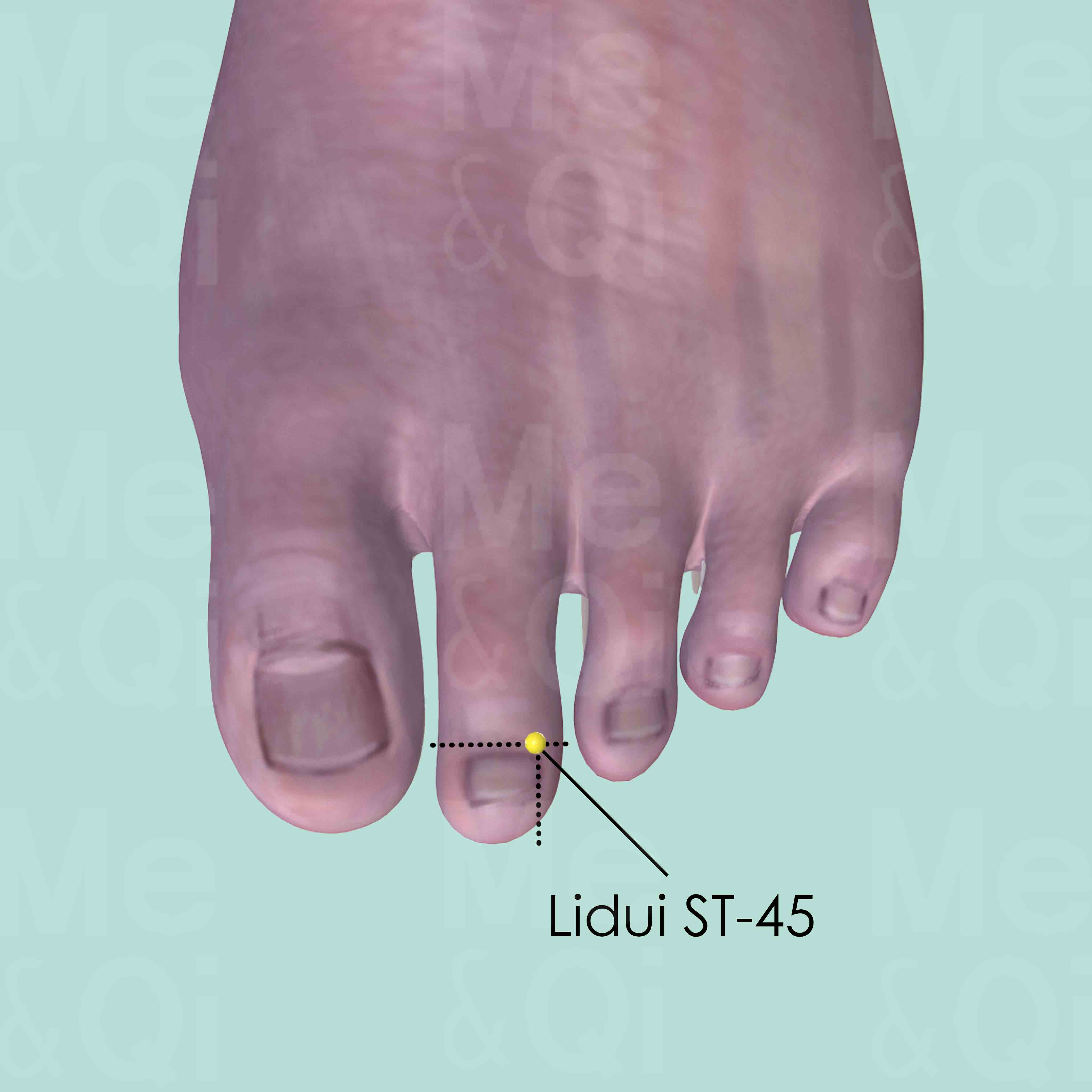Nasal Dischargeaccording to TCM
Symptom family: Nasal Disorders and Symptoms
Sub-symptom(s): Profuse Nasal Discharge Nasal Discharge In Children Thick Nasal Discharge
Root Causes of Nasal Discharge in TCM
Explore below more details about what might cause Nasal discharge according to TCM.
Wind
In TCM "Wind" is a concept that represents a pattern of disharmony, often characterized by its sudden and unpredictable nature, much like a gusty wind changing direction without warning. This pattern is associated with symptoms that come and go quickly or move around the body, such as itching, tremors, or even certain types of pain. Wind is considered to be a primary cause of illnesses that have these rapidly changing characteristics. In TCM, external Wind often refers to illnesses that start suddenly, like the common cold, believed to be caused by external pathogenic factors like climatic changes. On the other hand, internal Wind can be linked to internal imbalances and can manifest in conditions like dizziness or spasms. ... see more
Wind Patterns That Can Lead to Nasal Discharge
Common Symptoms: Aversion To Cold Fever Headaches Sneezing Itchy Throat Coughing Congested Nose Body Pain
| Pattern Name | Relevant Symptoms | Relevant Formulas |
|---|---|---|
| Exterior Wind | Runny nose, Aversion to cold, Fever, Headaches, Anemophobia, Nasal discharge, Clear sputum, Itchy throat, Sneezing, Coughing, Muscle pain, Itchy skin... see more | Chuan Xiong Cha Tiao San |
| Wind-Cold | Runny nose, Aversion to cold, Fever, Sneezing, Coughing, Nasal discharge, Occipital headache, Occipital stiffness, Congested nose, White and watery sputum... see more | Ma Huang Tang | Jing Fang Bai Du San | Cong Chi Tang | Huo Ren Cong Shi Tang | Jiu Wei Qiang Huo Tang | Jia Wei Xiang Su San | Shi Shen Tang | Jin Fei Cao San | Wu Ji San |
| Wind-Cold invading the Lungs | Runny nose, Aversion to cold, Fever, Itchy throat, Shortness of breath, Congested nose, Nasal discharge, Sneezing, Headaches, Body pain, White and watery sputum, Coughing and wheezing with copious sputum... see more | Ma Huang Tang | Ge Gen Tang | Xin Yi San | Zhi Sou San |
| Wind-Heat | Runny nose, Aversion to cold, Fever, Sneezing, Coughing, Nasal discharge, Occipital stiffness, Occipital headache, Perspiration, Sore throat, Yellowish phlegm... see more | Cong Chi Tang | Huo Ren Cong Shi Tang | Yin Qiao San | Sang Ju Yin | Jing Jie Lian Qiao Tang | Zhu Ye Cheng Liu Tang | Xiao Feng San | Fang Feng Tong Sheng San | Bing Peng San | Pu Ji Xiao Du Yin |
| Wind-Heat invading the Lungs | Runny nose, Aversion to cold, Fever, Coughing, Sore throat, Congested nose, Nasal discharge, Copious thick yellow sputum, Sneezing, Headaches, Body pain, Thirst, Tonsil swelling... see more | Yin Qiao San |
Cold
In TCM "Cold" as a pattern of disharmony refers to a specific type of imbalance within the body's systems, often linked to a deficiency or weakness. It's not about feeling physically cold or having a common cold, but rather a metaphorical description of certain symptoms and underlying conditions. When a TCM practitioner says someone suffers from "Cold," it usually implies that the body's Yang energy, which is warm and active, is insufficient or overpowered by Yin energy, which is cool and passive. Symptoms of Cold in TCM can include a general feeling of coldness, cold limbs, pale complexion, low energy, slow metabolism, and a preference for warmth. ... see more
Cold Patterns That Can Lead to Nasal Discharge
Common Symptoms: Sneezing White And Watery Sputum Chills Fever Aversion To Cold Lack Of Sweating Occipital Headache Shortness Of Breath
| Pattern Name | Relevant Symptoms | Relevant Formulas |
|---|---|---|
| Damp-Cold | Runny nose, Mouth ulcers, White and watery sputum, Nasal discharge, Sneezing, Chills, Abdominal pain, Cold extremities, Arthralgia, Diarrhea, Feeling of heaviness... see more | Wei Ling Tang |
| Greater Yang Attack of Cold | Runny nose, Occipital headache, Aversion to cold, Low grade fever, Lack of sweating, Stiff neck, Sneezing, Nasal discharge, Shortness of breath... see more | Ma Huang Tang |
| Wind-Cold | Runny nose, Aversion to cold, Fever, Sneezing, Coughing, Nasal discharge, Occipital headache, Occipital stiffness, Congested nose, White and watery sputum... see more | Ma Huang Tang | Jing Fang Bai Du San | Cong Chi Tang | Huo Ren Cong Shi Tang | Jiu Wei Qiang Huo Tang | Jia Wei Xiang Su San | Shi Shen Tang | Jin Fei Cao San | Wu Ji San |
| Wind-Cold invading the Lungs | Runny nose, Aversion to cold, Fever, Itchy throat, Shortness of breath, Congested nose, Nasal discharge, Sneezing, Headaches, Body pain, White and watery sputum, Coughing and wheezing with copious sputum... see more | Ma Huang Tang | Ge Gen Tang | Xin Yi San | Zhi Sou San |
Heat
In TCM "Heat" signifies an excess of Yang energy, leading to an imbalance where heat predominates over the body's cool Yin aspects. This condition is metaphorically akin to an internal over-heating. Symptoms indicative of Heat can include feelings of warmth, fever, sweating, irritability, red face, thirst with a preference for cold drinks, and a rapid pulse. The tongue may appear red with a yellow coating. Unlike the common interpretation of heat in terms of temperature, in TCM, it represents a state of hyperactivity or inflammation in the body.... see more
Heat Patterns That Can Lead to Nasal Discharge
Common Symptoms: Congested Nose Aversion To Cold Fever Sneezing Coughing Sore Throat Headaches Tonsil Swelling
| Pattern Name | Relevant Symptoms | Relevant Formulas |
|---|---|---|
| Wind-Heat | Runny nose, Aversion to cold, Fever, Sneezing, Coughing, Nasal discharge, Occipital stiffness, Occipital headache, Perspiration, Sore throat, Yellowish phlegm... see more | Cong Chi Tang | Huo Ren Cong Shi Tang | Yin Qiao San | Sang Ju Yin | Jing Jie Lian Qiao Tang | Zhu Ye Cheng Liu Tang | Xiao Feng San | Fang Feng Tong Sheng San | Bing Peng San | Pu Ji Xiao Du Yin |
| Wind-Heat invading the Lungs | Runny nose, Aversion to cold, Fever, Coughing, Sore throat, Congested nose, Nasal discharge, Copious thick yellow sputum, Sneezing, Headaches, Body pain, Thirst, Tonsil swelling... see more | Yin Qiao San |
| Damp-Heat in the Stomach | Thick nasal discharge, Upper abdominal pain, Upper abdominal fullness, Feeling of heaviness, Face pain, Congested nose, Dry mouth without desire to drink, Nausea, Feeling hot, Dull yellow complexion, Sticky taste in the mouth... see more | Lian Po Yin | Ge Hua Jie Cheng San |
Dampness
"Dampness" in TCM is a concept that describes a pattern of disharmony where the body accumulates excess moisture. Imagine the heavy, sticky feeling you get on a very humid day; that's similar to what dampness feels like internally. It can manifest as a sense of heaviness, bloating, sluggishness, or even a foggy mind. This condition is often thought to arise from environmental factors like living in a damp place, dietary habits that promote moisture in the body, or internal imbalances that hinder the body's ability to process fluids properly. In TCM, dampness can obstruct the normal flow of energy and fluids in the body, leading to various symptoms.... see more
Dampness Patterns That Can Lead to Nasal Discharge
Common Symptoms: Feeling Of Heaviness Mouth Ulcers White And Watery Sputum Sneezing Chills Abdominal Pain Cold Extremities Arthralgia
| Pattern Name | Relevant Symptoms | Relevant Formulas |
|---|---|---|
| Damp-Cold | Runny nose, Mouth ulcers, White and watery sputum, Nasal discharge, Sneezing, Chills, Abdominal pain, Cold extremities, Arthralgia, Diarrhea, Feeling of heaviness... see more | Wei Ling Tang |
| Damp-Heat in the Stomach | Thick nasal discharge, Upper abdominal pain, Upper abdominal fullness, Feeling of heaviness, Face pain, Congested nose, Dry mouth without desire to drink, Nausea, Feeling hot, Dull yellow complexion, Sticky taste in the mouth... see more | Lian Po Yin | Ge Hua Jie Cheng San |
Lung
In TCM the Lungs are seen as the organ responsible for controlling Qi and respiration, as well as being a key part of the body's defensive system. They are thought to maintain the balance and flow of air and moisture, and are closely linked to the skin and hair. When the Lungs are imbalanced or malfunctioning in TCM, it can lead to respiratory issues like coughing or asthma, a weakened immune system, dry skin, and emotional disturbances such as sadness or grief. These symptoms are believed to arise from disruptions in the Lungs' ability to regulate Qi and protect the body, highlighting their central role in maintaining overall health and well-being.... see more
Lung Patterns That Can Lead to Nasal Discharge
Common Symptoms: Aversion To Cold Fever Congested Nose Sneezing Headaches Body Pain Itchy Throat Shortness Of Breath
| Pattern Name | Relevant Symptoms | Relevant Formulas |
|---|---|---|
| Wind-Cold invading the Lungs | Runny nose, Aversion to cold, Fever, Itchy throat, Shortness of breath, Congested nose, Nasal discharge, Sneezing, Headaches, Body pain, White and watery sputum, Coughing and wheezing with copious sputum... see more | Ma Huang Tang | Ge Gen Tang | Xin Yi San | Zhi Sou San |
| Wind-Heat invading the Lungs | Runny nose, Aversion to cold, Fever, Coughing, Sore throat, Congested nose, Nasal discharge, Copious thick yellow sputum, Sneezing, Headaches, Body pain, Thirst, Tonsil swelling... see more | Yin Qiao San |
Stomach
In TCM the Stomach is regarded as the "sea of nourishment," pivotal for digesting food and transforming it into Qi and blood. It works closely with the Spleen to distribute these essential nutrients throughout the body. When the Stomach is out of balance or malfunctions in TCM, it often leads to digestive problems such as bloating, nausea, vomiting, poor appetite, or a feeling of fullness. There may also be issues like acid reflux or a sour taste in the mouth. Emotionally, an imbalanced Stomach can contribute to excessive worry and overthinking, reflecting the TCM belief that physical and emotional well-being are deeply interconnected.... see more
Stomach Patterns That Can Lead to Nasal Discharge
| Pattern Name | Relevant Symptoms | Relevant Formulas |
|---|---|---|
| Damp-Heat in the Stomach | Thick nasal discharge, Upper abdominal pain, Upper abdominal fullness, Feeling of heaviness, Face pain, Congested nose, Dry mouth without desire to drink, Nausea, Feeling hot, Dull yellow complexion, Sticky taste in the mouth... see more | Lian Po Yin | Ge Hua Jie Cheng San |
TCM Herbal Formulas for Nasal Discharge
Explore below some TCM herbal formulas used to address nasal discharge, organized by cause and by formula type.
- By Cause
- By Formula Type
- Wind
- Cold
- Heat
- Dampness
- View More Causes
- Formulas that clear wind-Cold
- Formulas that dredge and disperse external wind
- External formulas for external disorders
- Formulas that clear wind-Heat
- Formulas that clear early-stage exterior disorders
- Formulas that expel dampness
- Formulas that release the exterior and warm the interior
- Formulas that transform phlegm and extinguish wind
- Formulas that release the exterior and purge the interior
- Formulas that clear heat and resolve toxicity
- Formulas that clear heat and expel dampness
- Formulas that reduce food stagnation with tonification
Top Formula for Wind:
Ma Huang Tang
Suitable for Wind patterns that may cause nasal discharge, such as Wind-Cold or Wind-Cold invading the Lungs
Learn moreAll Formulas Recommended for Nasal Discharge Caused by Wind
| Formula | Patterns Suitable For |
|---|---|
| Ma Huang Tang | Wind-Cold, Wind-Cold invading the Lungs |
| Cong Chi Tang | Wind-Cold, Wind-Heat |
| Huo Ren Cong Shi Tang | Wind-Cold, Wind-Heat |
| Yin Qiao San | Wind-Heat, Wind-Heat invading the Lungs |
| Chuan Xiong Cha Tiao San | Exterior Wind |
| Jing Fang Bai Du San | Wind-Cold |
| Jiu Wei Qiang Huo Tang | Wind-Cold |
| Jia Wei Xiang Su San | Wind-Cold |
| Shi Shen Tang | Wind-Cold |
| Jin Fei Cao San | Wind-Cold |
| Wu Ji San | Wind-Cold |
| Ge Gen Tang | Wind-Cold invading the Lungs |
| Xin Yi San | Wind-Cold invading the Lungs |
| Zhi Sou San | Wind-Cold invading the Lungs |
| Sang Ju Yin | Wind-Heat |
| Jing Jie Lian Qiao Tang | Wind-Heat |
| Zhu Ye Cheng Liu Tang | Wind-Heat |
| Xiao Feng San | Wind-Heat |
| Fang Feng Tong Sheng San | Wind-Heat |
| Bing Peng San | Wind-Heat |
| Pu Ji Xiao Du Yin | Wind-Heat |
Top Formula for Cold:
Ma Huang Tang
Suitable for Cold patterns that may cause nasal discharge, such as Greater Yang Attack of Cold or Wind-Cold
Learn moreAll Formulas Recommended for Nasal Discharge Caused by Cold
| Formula | Patterns Suitable For |
|---|---|
| Ma Huang Tang | Greater Yang Attack of Cold, Wind-Cold, Wind-Cold invading the Lungs |
| Cong Chi Tang | Wind-Cold |
| Huo Ren Cong Shi Tang | Wind-Cold |
| Wei Ling Tang | Damp-Cold |
| Jing Fang Bai Du San | Wind-Cold |
| Jiu Wei Qiang Huo Tang | Wind-Cold |
| Jia Wei Xiang Su San | Wind-Cold |
| Shi Shen Tang | Wind-Cold |
| Jin Fei Cao San | Wind-Cold |
| Wu Ji San | Wind-Cold |
| Ge Gen Tang | Wind-Cold invading the Lungs |
| Xin Yi San | Wind-Cold invading the Lungs |
| Zhi Sou San | Wind-Cold invading the Lungs |
Top Formula for Heat:
Yin Qiao San
Suitable for Heat patterns that may cause nasal discharge, such as Wind-Heat or Wind-Heat invading the Lungs
Learn moreAll Formulas Recommended for Nasal Discharge Caused by Heat
| Formula | Patterns Suitable For |
|---|---|
| Yin Qiao San | Wind-Heat, Wind-Heat invading the Lungs |
| Cong Chi Tang | Wind-Heat |
| Huo Ren Cong Shi Tang | Wind-Heat |
| Sang Ju Yin | Wind-Heat |
| Jing Jie Lian Qiao Tang | Wind-Heat |
| Zhu Ye Cheng Liu Tang | Wind-Heat |
| Xiao Feng San | Wind-Heat |
| Fang Feng Tong Sheng San | Wind-Heat |
| Bing Peng San | Wind-Heat |
| Pu Ji Xiao Du Yin | Wind-Heat |
| Lian Po Yin | Damp-Heat in the Stomach |
| Ge Hua Jie Cheng San | Damp-Heat in the Stomach |
Top Formula for Dampness:
Wei Ling Tang
Suitable for Dampness patterns that may cause nasal discharge, such as Damp-Cold
Learn moreAll Formulas Recommended for Nasal Discharge Caused by Dampness
| Formula | Patterns Suitable For |
|---|---|
| Wei Ling Tang | Damp-Cold |
| Lian Po Yin | Damp-Heat in the Stomach |
| Ge Hua Jie Cheng San | Damp-Heat in the Stomach |
Formulas that clear Wind-Cold
These formulas are suitable for some nasal discharge-causing patterns like Greater Yang Attack of Cold or Wind-Cold.
One such formula is Ma Huang Tang, with ephedra as a key herb.
Other formulas of this category are listed in the table below.
All "formulas that clear wind-Cold" recommended for nasal discharge
| Formula | Patterns Suitable For (if applicable) |
|---|---|
| Ma Huang Tang | Greater Yang Attack of Cold, Wind-Cold, Wind-Cold invading the Lungs |
| Jiu Wei Qiang Huo Tang | Wind-Cold |
| Jia Wei Xiang Su San | Wind-Cold |
| Shi Shen Tang | Wind-Cold |
| Jin Fei Cao San | Wind-Cold |
| Ge Gen Tang | Wind-Cold invading the Lungs |
Formulas that dredge and disperse External Wind
These formulas are suitable for some nasal discharge-causing patterns like Exterior Wind.
One such formula is Chuan Xiong Cha Tiao San, with szechuan lovage root as a key herb.
Other formulas of this category are listed in the table below.
All "formulas that dredge and disperse external wind" recommended for nasal discharge
| Formula | Patterns Suitable For (if applicable) |
|---|---|
| Chuan Xiong Cha Tiao San | Exterior Wind |
| Xin Yi San | Wind-Cold invading the Lungs |
| Xiao Feng San | Wind-Heat |
External formulas for External disorders
These formulas are suitable for some nasal discharge-causing patterns like Wind-Heat or Wind-Heat invading the Lungs.
One such formula is Yin Qiao San, with honeysuckle flowers as a key herb.
Other formulas of this category are listed in the table below.
All "external formulas for external disorders" recommended for nasal discharge
| Formula | Patterns Suitable For (if applicable) |
|---|---|
| Yin Qiao San | Wind-Heat, Wind-Heat invading the Lungs |
| Jing Fang Bai Du San | Wind-Cold |
| Bing Peng San | Wind-Heat |
Formulas that clear early-stage Exterior disorders
These formulas are suitable for some nasal discharge-causing patterns like Wind-Cold or Wind-Heat.
One such formula is Cong Chi Tang, with scallions as a key herb.
Other formulas of this category are listed in the table below.
All "formulas that clear early-stage exterior disorders" recommended for nasal discharge
| Formula | Patterns Suitable For (if applicable) |
|---|---|
| Cong Chi Tang | Wind-Cold, Wind-Heat |
| Huo Ren Cong Shi Tang | Wind-Cold, Wind-Heat |
Formulas that clear Wind-Heat
These formulas are suitable for some nasal discharge-causing patterns like Wind-Heat.
One such formula is Sang Ju Yin, with mulberry leaves as a key herb.
Other formulas of this category are listed in the table below.
All "formulas that clear wind-Heat" recommended for nasal discharge
| Formula | Patterns Suitable For (if applicable) |
|---|---|
| Sang Ju Yin | Wind-Heat |
| Jing Jie Lian Qiao Tang | Wind-Heat |
| Zhu Ye Cheng Liu Tang | Wind-Heat |
Formulas that expel Dampness
These formulas are suitable for some nasal discharge-causing patterns like Damp-Cold.
One such formula is Wei Ling Tang, with water plantain as a key herb.
Formulas that transform Phlegm and extinguish Wind
These formulas are suitable for some nasal discharge-causing patterns like Wind-Cold invading the Lungs.
One such formula is Zhi Sou San, with aster root as a key herb.
Formulas that release the Exterior and purge the Interior
These formulas are suitable for some nasal discharge-causing patterns like Wind-Heat.
One such formula is Fang Feng Tong Sheng San, with saposhnikovia root as a key herb.
Formulas that clear Heat and resolve toxicity
These formulas are suitable for some nasal discharge-causing patterns like Wind-Heat.
One such formula is Pu Ji Xiao Du Yin, with baikal skullcap root as a key herb.
Formulas that clear Heat and expel dampness
These formulas are suitable for some nasal discharge-causing patterns like Damp-Heat in the Stomach.
One such formula is Lian Po Yin, with goldthread rhizome as a key herb.
Formulas that reduce food Stagnation with tonification
These formulas are suitable for some nasal discharge-causing patterns like Damp-Heat in the Stomach.
One such formula is Ge Hua Jie Cheng San, with kudzu flower as a key herb.
Acupoints for Nasal Discharge
Explore below some acupoints used to address nasal discharge, organized by meridian.
- By Meridian
- Governing Vessel
- Bladder Channel
- Large Intestine Channel
- Extra Points: Head and Neck (EX-HN)
- Triple Burner Channel
- Stomach Channel
- Lung Channel
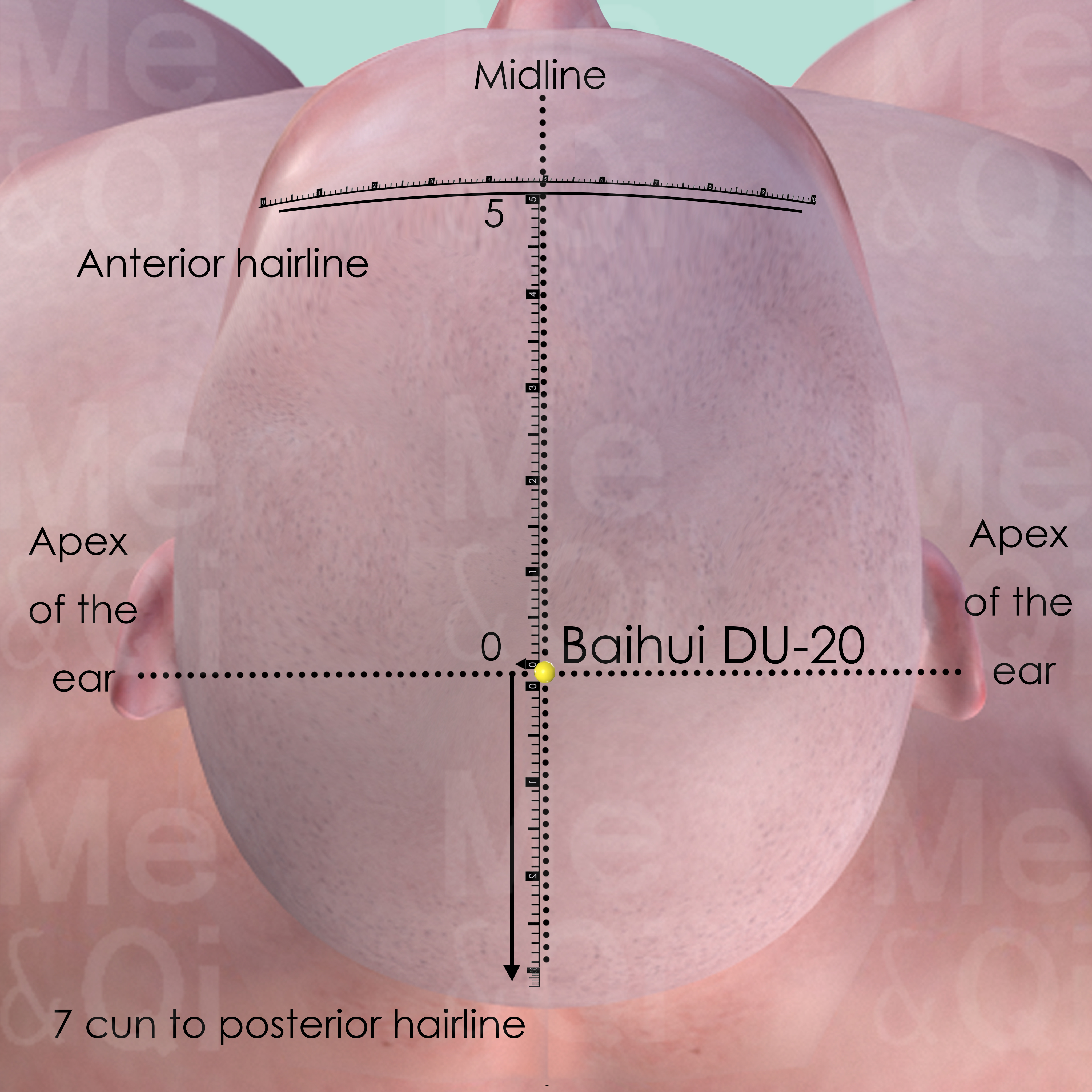
Baihui DU-20
At the vertex, at the junction of a line connecting the apex of the ears and the midline, in the depression 7 cun above the posterior hairline and 5 cun behind the anterior hairline.
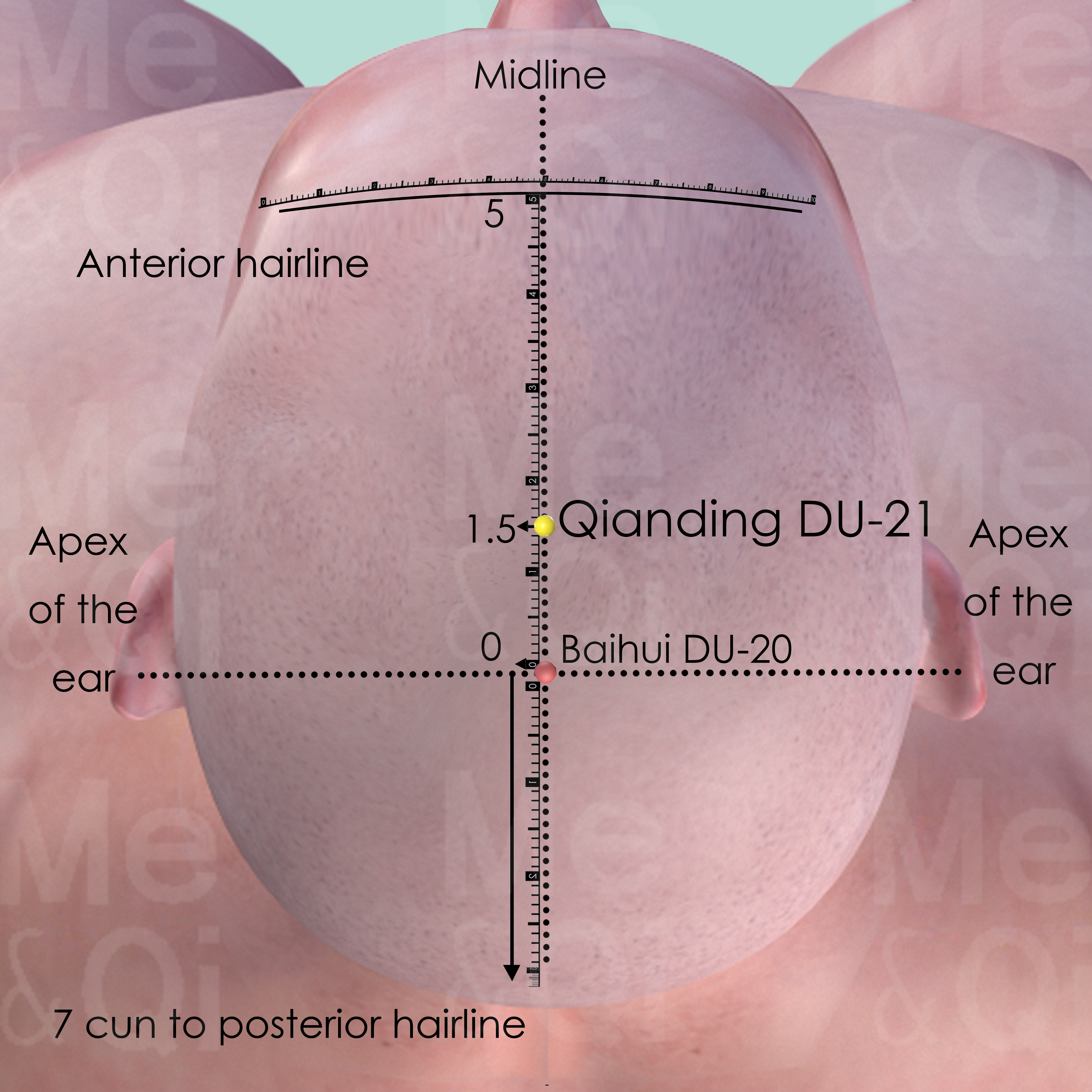
Qianding DU-21
On the midline, 1.5 cun anterior to Baihui DU-20 or 3.5 cun posterior to the anterior hairline.

Xinhui DU-22
On the head midline, 3 cun anterior to Baihui DU-20, 2 cun posterior to the front hairline.
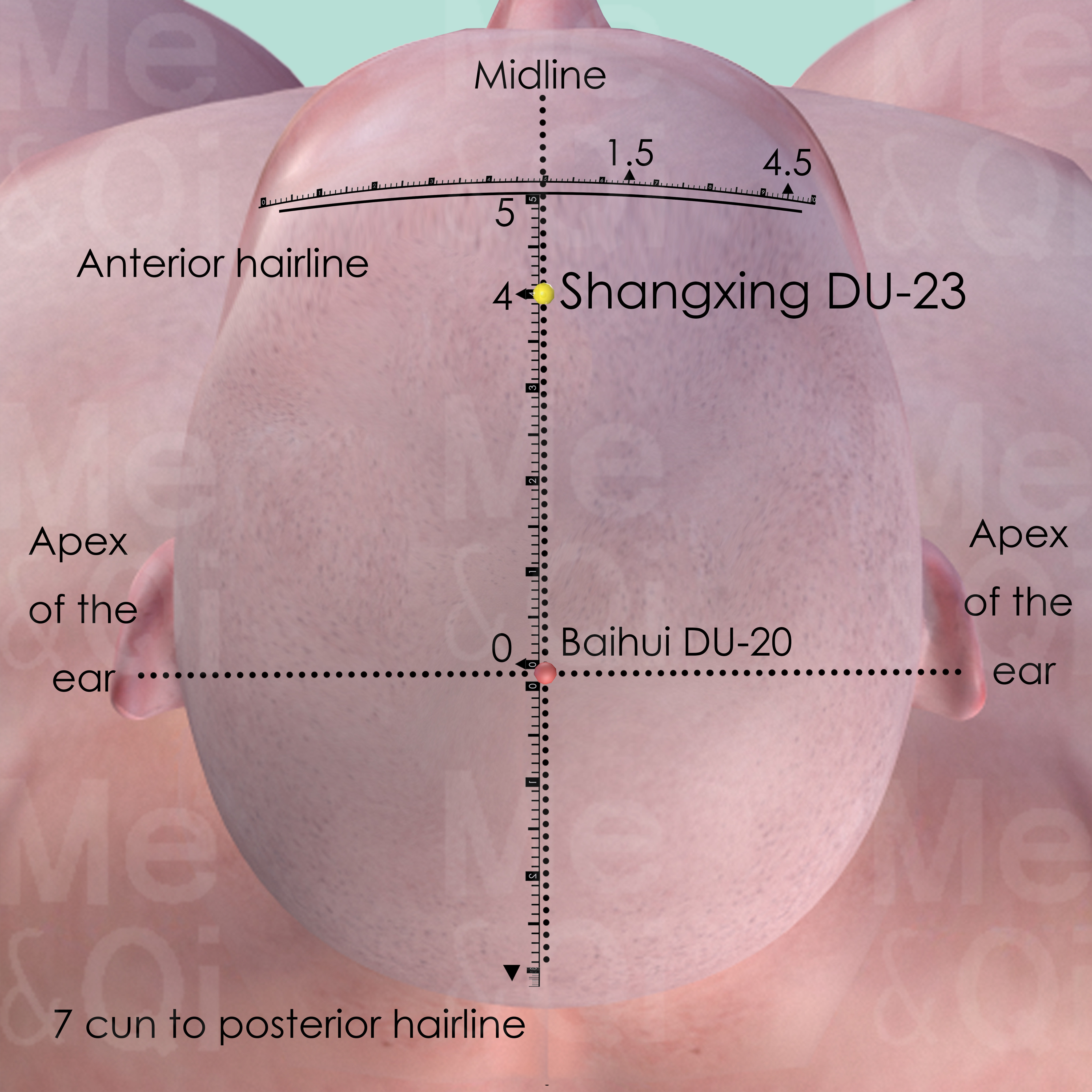
Shangxing DU-23
On the head midline, 1 cun within anterior to the front hairline, 4 cun anterior to Baihui DU-20.
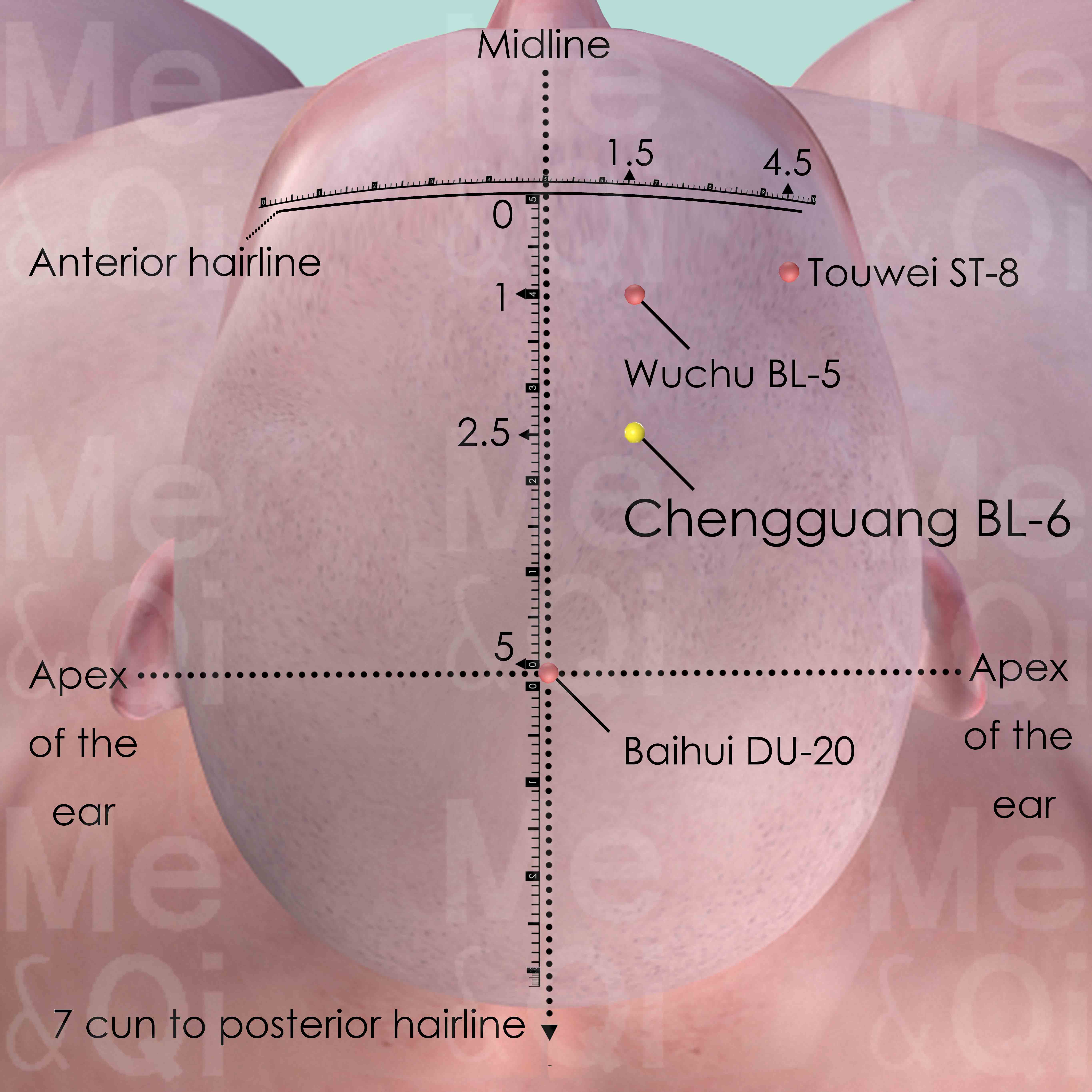
Chengguang BL-6
1.5 cun lateral to the anterior midline and 2.5 cun within the anterior hairline. On the other hand, this point is at the medial third and lateral two-thirds of the distance from anterior midline to the line vertically from Touwei ST-8. Chengguang BL-6 is also 1.5 cun posterior to Wuchu BL-5.
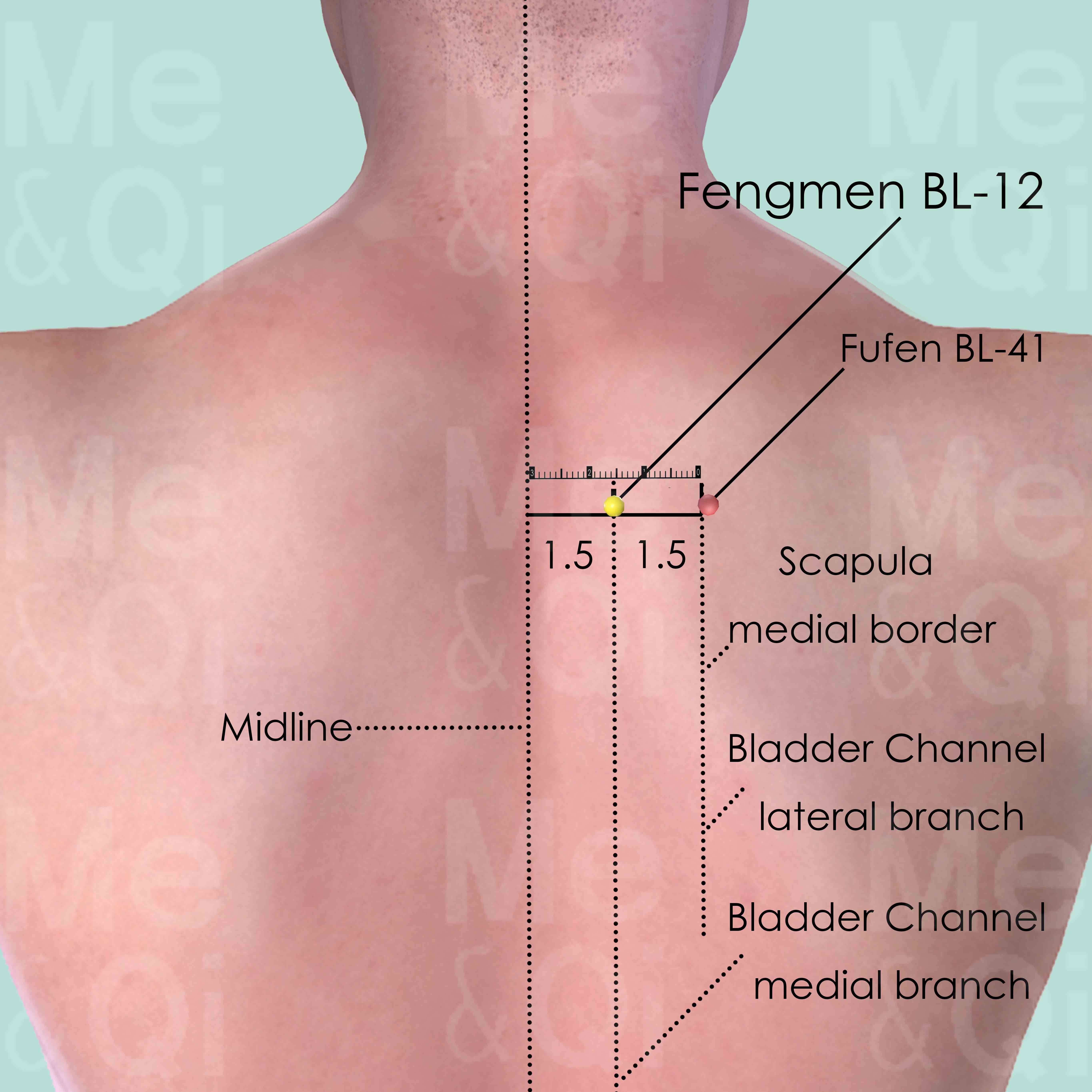
Fengmen BL-12
1.5 cun lateral to the lower border of the spinous process of the 2nd thoracic vertebra (T2).
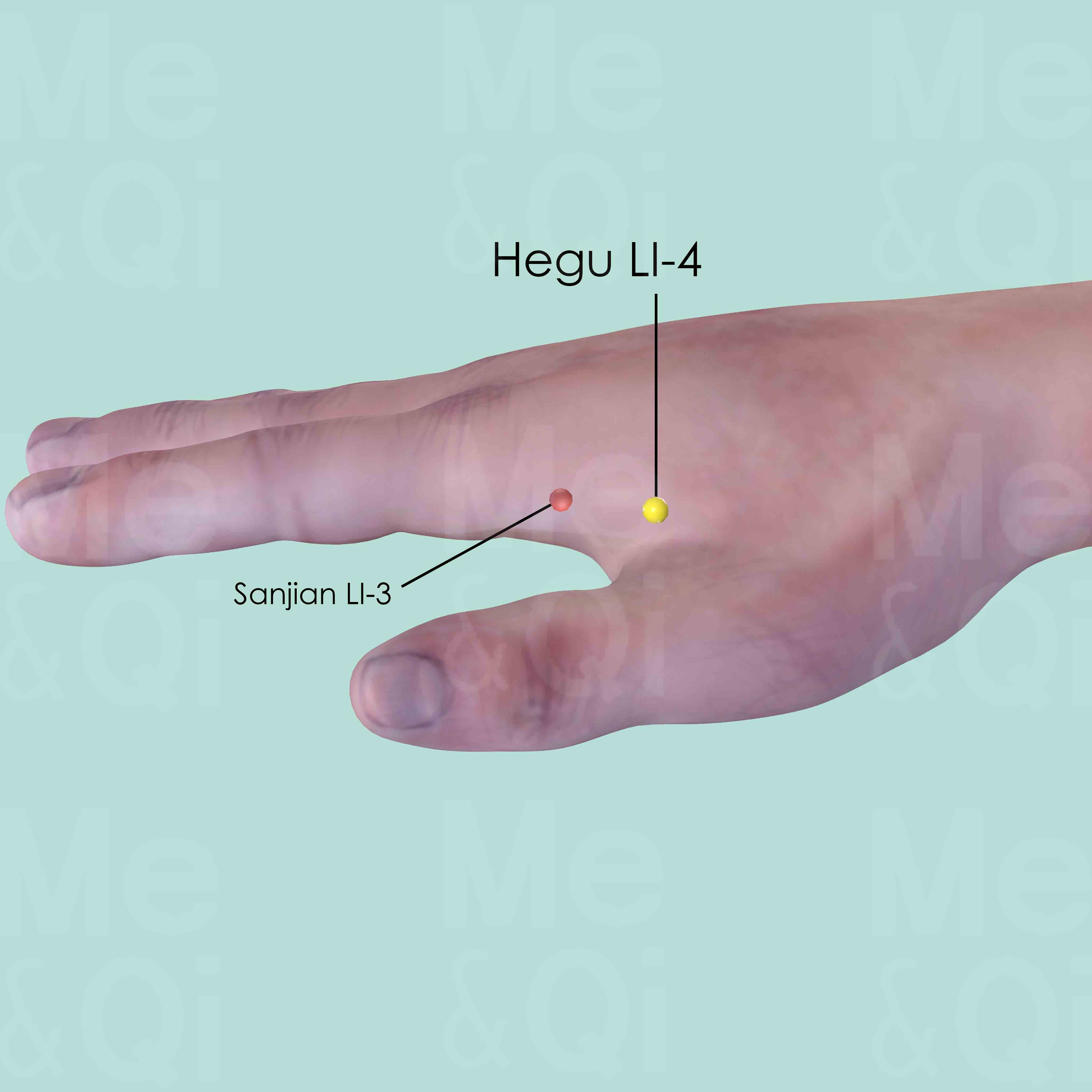
Hegu LI-4
Between the 1st and 2nd metacarpal bones, approximately in the middle of the 2nd metacarpal bone on the radial side.
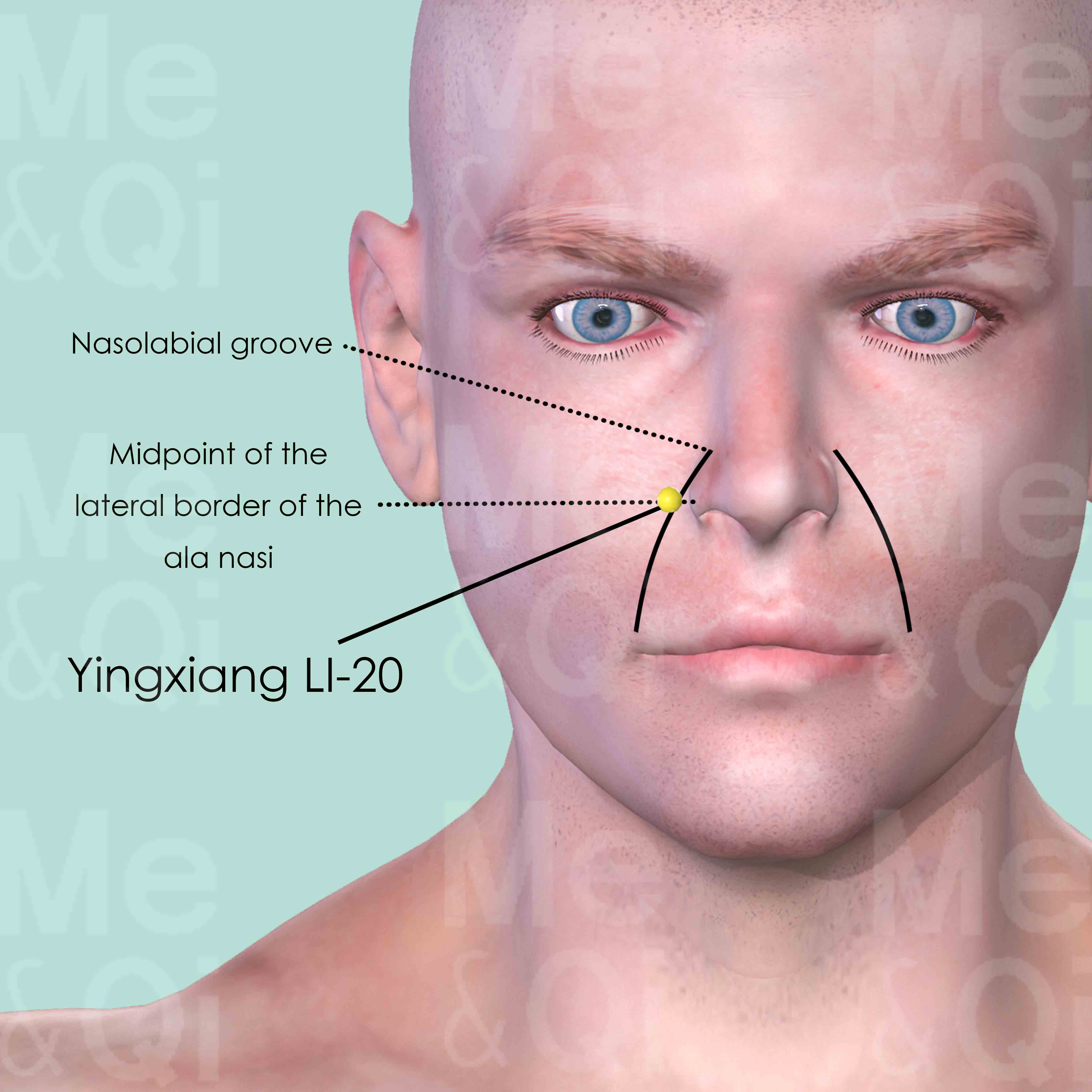
Yingxiang LI-20
In the nasolabrial groove, at the level of the midpoint of the lateral border of ala nasi.
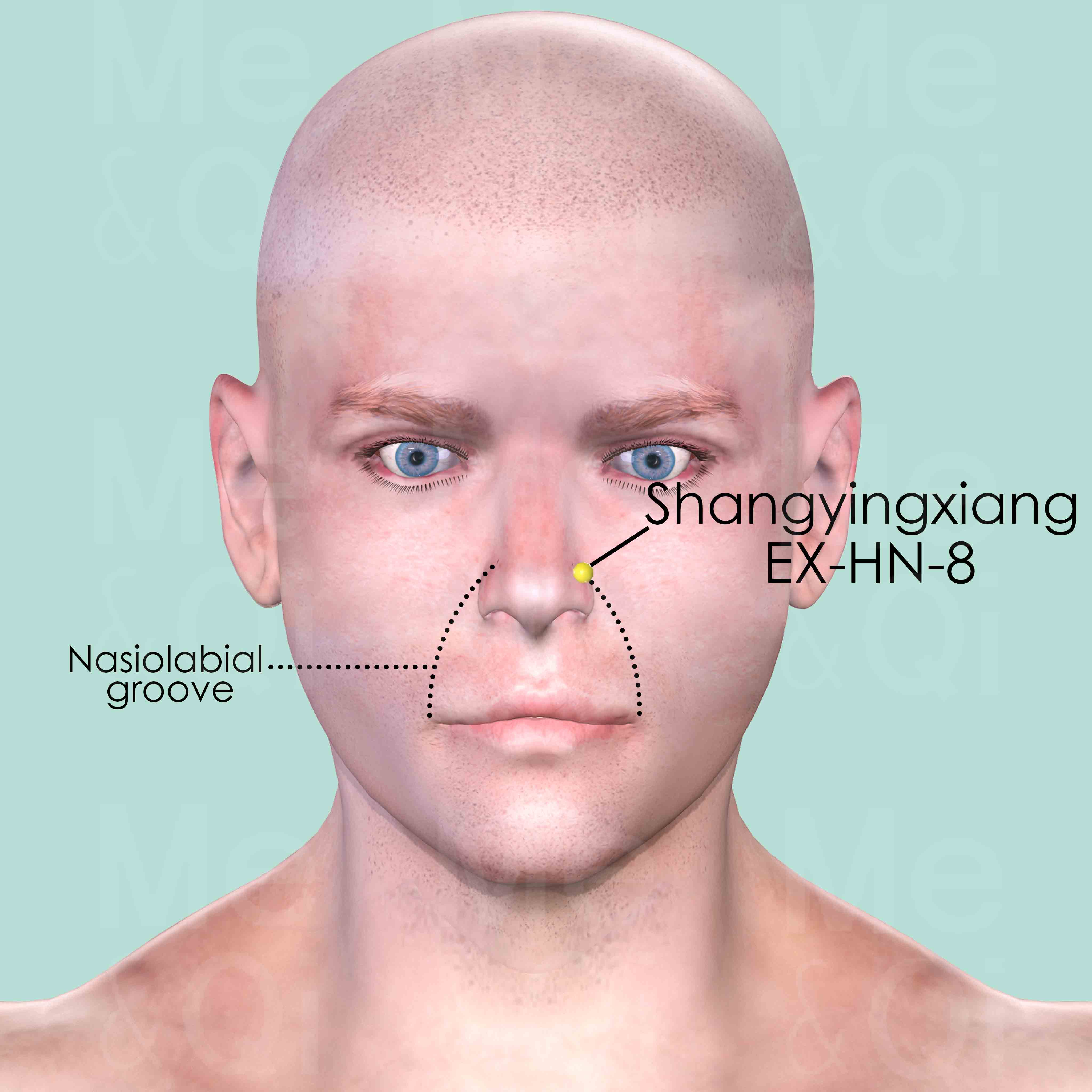
Shangyingxiang EX-HN-8
At the upper end of the nasiolabial groove, at the junction of the maxilla and the nasal cavity.
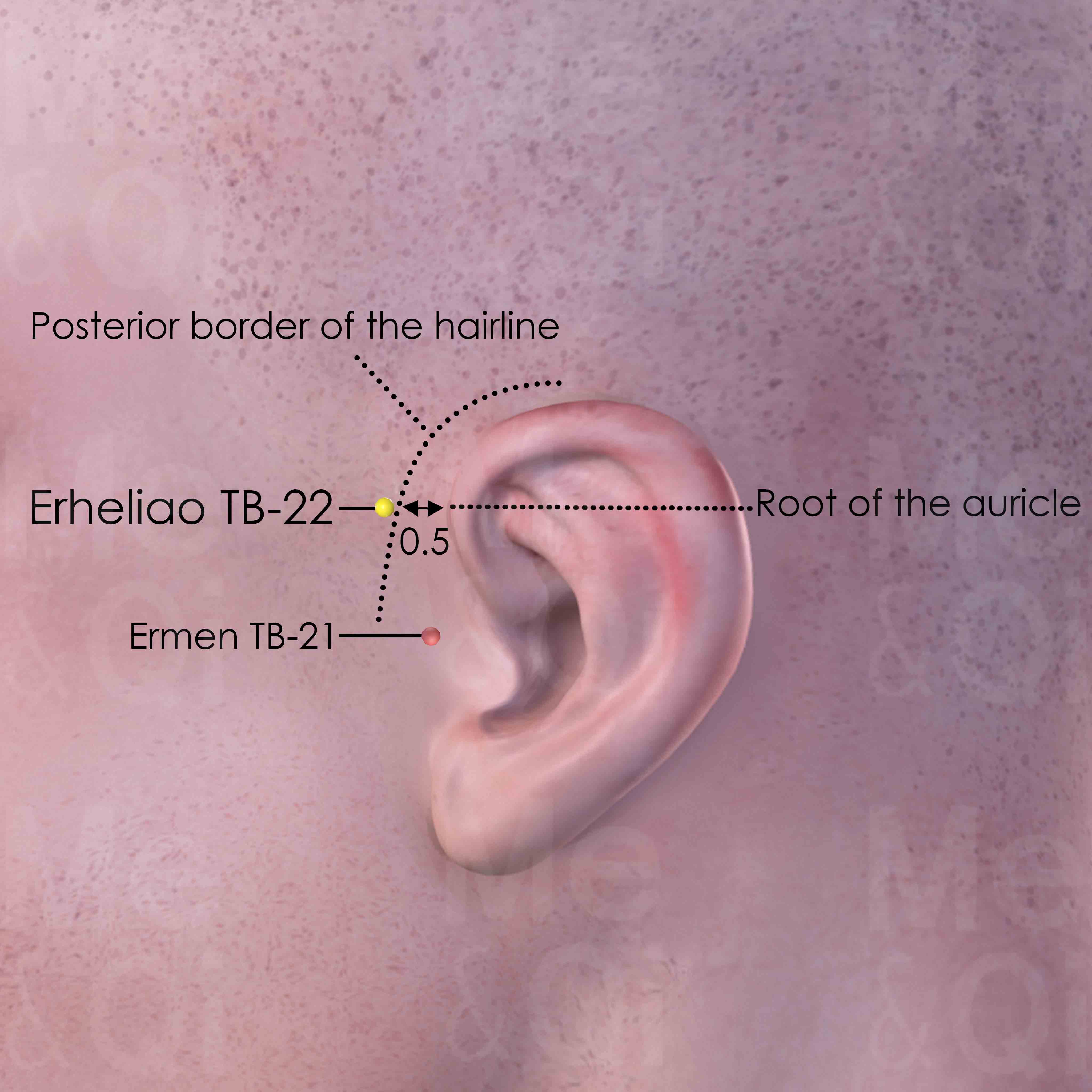
Erheliao TB-22
Anterior and superior to Ermen TB-21, level with the root of the auricle, on the posterior border of the hairline of the temple where the superficial temporal artery passes.
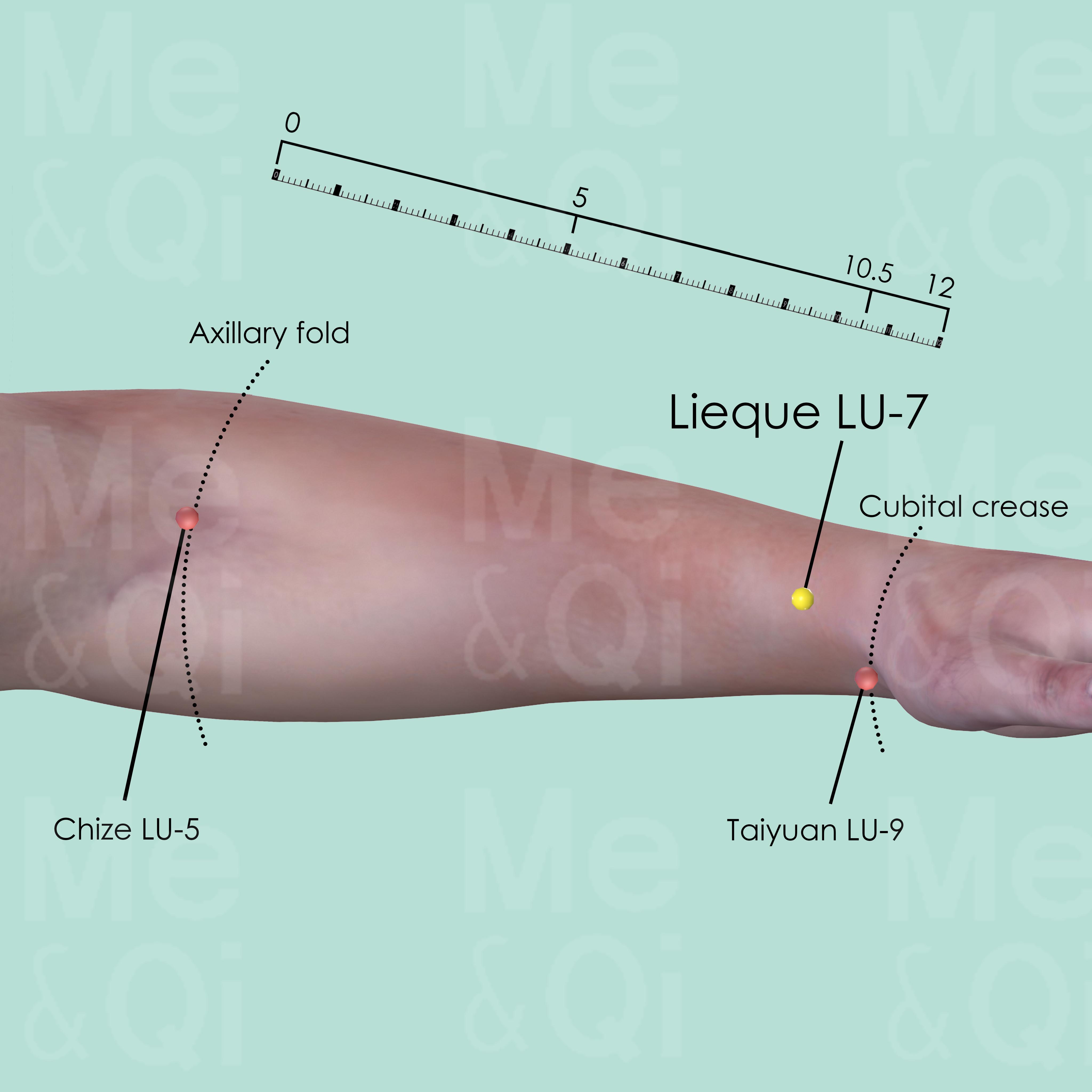
Lieque LU-7
Above the styloid process of the radius, about 1.5 cun proximal to the wrist crease (wrist joint space) in a V-shaped depression.

